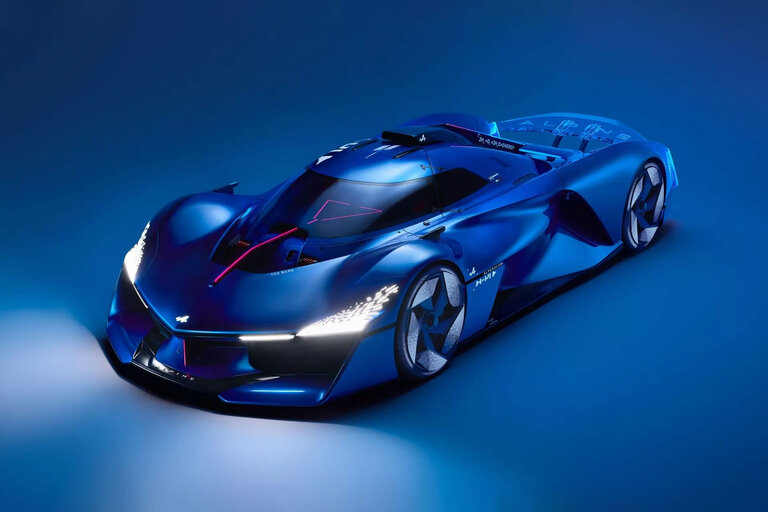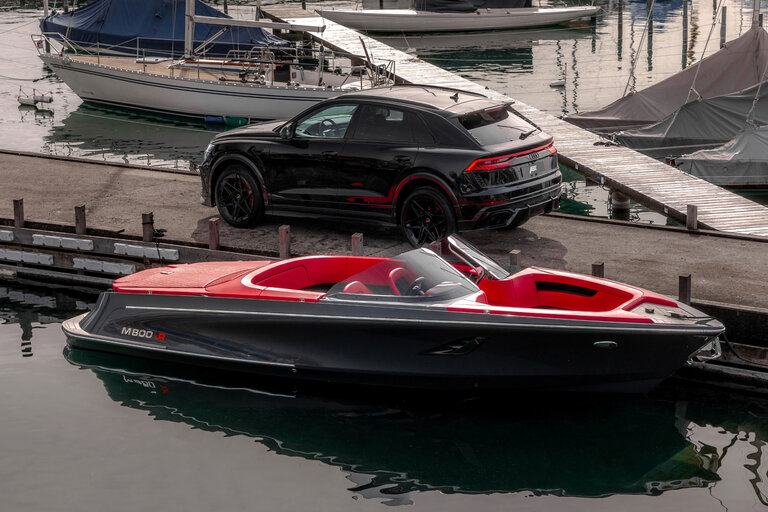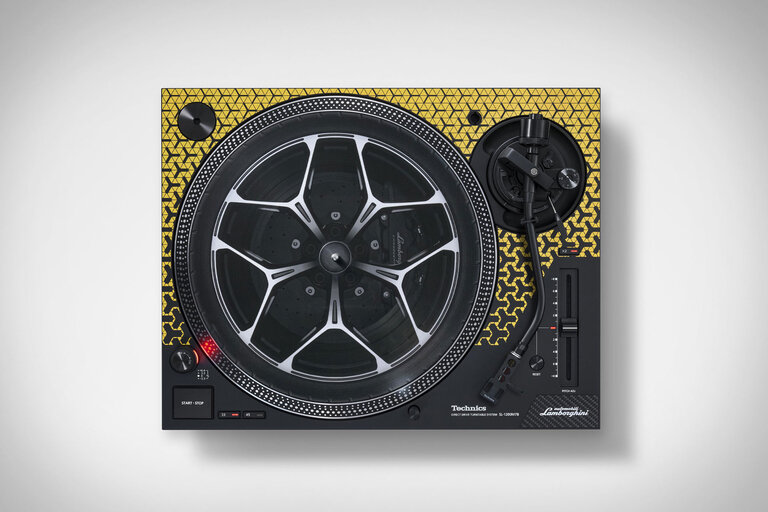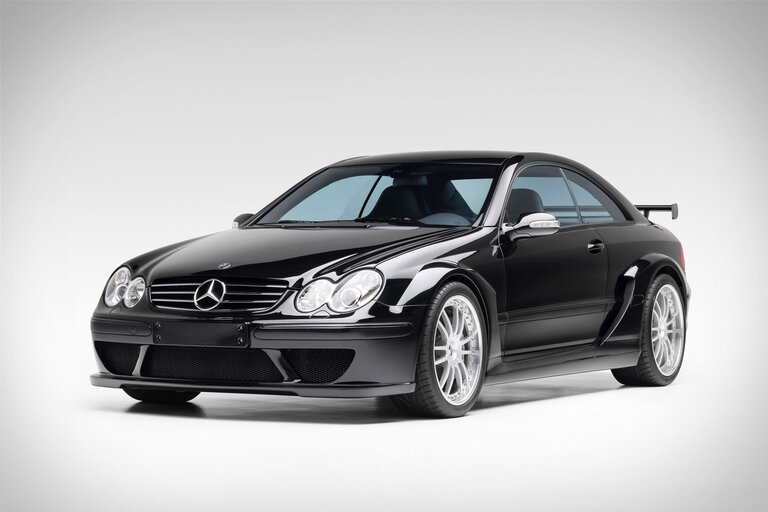
Stone-faced and unblinking, four great presidents hold their pose as the cameras click. It’s summer, America is on vacation, and Mt. Rushmore draws the Pace Arrows, Palm Aires, Bounders, and Born Frees from across the land to clog the roads of South Dakota’s Black Hills.
This scenic section of the heartland was beckoning summer visitors long before pavement eased the trip. President Calvin Coolidge and First Lady Grace came by train to Rapid City in 1927 for a three-week getaway. It stretched to three months, so agreeable were the terrain and the temperatures.
Seventy-nine years later, your reporters have arrived, but there’ll be no water slides and Stuckey’s stops for us. No, we’re on a fact-finding mission: Does the traditional American-truck-based SUV have a future? Gas prices are stuck stubbornly at three bucks per gallon, bombs are exploding in the Middle East, the stock market is shuddering, and normally optimistic Americans are having doubts: Is our cheap-fuel way of living coming to an end?
If it is, the truck-based SUV is an endangered species. And that, in turn, promises a big change for U.S. families. Here’s why. First thing on a July morning, upon awakening in the hospitable town of Custer, South Dakota—about 15 miles southwest of Mt. Rushmore—we hustled out into the sweet morning air to see what vacationers are driving. Here’s what we found in the Comfort Inn’s parking lot: 20 SUVs, 18 cars, 14 minivans, and 10 pickups.
Not included in our motel count were the five sport-utes we’d driven from Denver the day before. If the SUV is the king of our roads, as the parking-lot count suggests, then these five are the kings of kings, the top models from Cadillac, Lincoln, Audi, Infiniti, and Mercedes-Benz.
Yes, this is a comparison test, one of many we do each year, yet the question to be answered is much larger than the usual “Which is best?” This is America versus Europe—Detroit’s newest and most expensive sport-utes face off against the latest choices from Germany for these same customers.
The SUV as a popular family hauler is an American invention, based on our indigenous pickup truck. The first Ford Explorer, and most of its subsequent competitors, were four-door passenger vehicles adapted from pickup frames and bodies. But pickups don’t exist as mainstream vehicles in Europe, so European SUVs start from scratch as unit-construction vehicles.
Those two approaches meet head-on in this comparison. The Cadillac Escalade, new this spring, is the first wave of new SUVs and pickups to be based on the GMT900 body-on-frame platform. With its flashy swagger and 403-hp V-8, this new Escalade is already something of a celebrity. We promise to look past that.
Also new—so oven-fresh it wasn’t in showrooms at test time—is the Lincoln Navigator. Sharing components with Ford’s bestselling F-150 pickup, the 6119-pound Gator is Dearborn’s flagship SUV. Were size all that mattered, the others would be scrambling for second place.
Representing the Euro approach, the unit-body Audi Q7 is a stretched-and-recarved VW Touareg SUV. From Mercedes-Benz we have the GL450, a made-in-Alabama unit body that shares certain underpinnings with the lower-priced M-class SUV and wagonesque R-class.
The Lexus LX470 is due for replacement soon and therefore not included here. But we did invite one more pickup-based SUV—the Infiniti QX56, built in Canton, Mississippi, of bones shared with Nissan’s Titan truck.
Now that you’ve met the players, let’s get to the question that brought us here: Can our traditional truck-based SUVs compete with Europe’s latest unit bodies?
Fifth Place: Lincoln Navigator 4×4
Tall, with broad shoulders and chiseled features, the new Navigator might be taken for some manly western character born to roam the lonely roads of South Dakota and Wyoming. That is, until you look inside. The instrument cluster is Dearborn Baroque circa 1958. The speedo and the tach are square and chromey. Arrayed above them is a matching set of four small gauges, rectangular shapes, each the size of a commemorative postage stamp. For actual information, the New York Times is an easier read.
HIGHS: The roof, of course, and the lookout-tower view of the road; the power-up-and-down third row is good for a wow, too.
LOWS: The singing-tire quartet, numb controls, crude interior textures, the 1958-all-over-again instrument cluster.
This truck is an extremist in the SUV world, offering big and bland in wholesale quantities. The 300-hp V-8 speaks in a muted voice, quiet enough that it could be sounding off from some other vehicle in traffic. Regular 87-octane gas is recommended, the only one of the five not to thirst for the expensive stuff.
Performance is weakest of the group in all respects. Only the Navigator requires more than eight seconds to accelerate to 60 mph (8.3), needs more than 200 feet to brake from 70 mph (209), and fails to grip the road sufficiently to produce 0.70 g of cornering force (0.65 g).
Despite a reputation as the smooth and silent type, the Gator disappointed us on several fronts. Dolling it up with low-profile 275/55R-20 Pirellis may earn style points in the inner city, but we found the dubs to be exceptionally noisy on interstates, where they sang loudly over road textures that the Infiniti and Benz ignored. The air-rush sound over the Gator’s greenhouse seemed louder than the others, too, even though our sound-level meter didn’t back up this perception.
If it’s a view over the roofs of other traffic that you seek, this Lincoln is a winner. As a rule, truck-style body-on-frame construction gives a higher eye point, and a higher step-up to enter. As a rough tape-measure indication, the floors of the unit-body Audi and Benz were about 19 inches above the pavement and the frame trucks were up 22 or 23 inches.
Despite its largest-of-the-group exterior, the Gator surpassed all others in only one space measurement: It holds the largest hunk of plywood flat on its floor, although the Infiniti holds a piece nearly as big.
As a people hauler, headroom is only slightly less than in the Sistine Chapel, and legroom is superior. The second-row captain’s chairs fold and tumble forward to clear a path to the spacious third row. For comfort, we rated the steerage section below only the top-ranked Benz; for ease of entry and exit back there, it ranked third. For driving fun, fuhgedaboudit.
THE VERDICT: What are they thinking?
2007 Lincoln Navigator 4×4
300-hp V-8, 6-speed automatic, 6119 lb
Base/as-tested price: $51,475/$59,015
Towing, max/as tested: 8950/8750 lb
Cargo, seats up/down: 18/104 cu ft
C/D TEST RESULTS
60 mph: 8.3 sec
100 mph: 23.0 sec
1/4 mile: 16.3 sec @ 86 mph
Braking, 70–0 mph: 209 ft
Roadholding, 300-ft-dia skidpad: 0.65 g
C/D observed fuel economy: 16 mpg
Fourth Place: Cadillac Escalade AWD
This is an extroverted truck with a flashy chrome smile, a snorty V-8 of 403 advertised horsepower, and high-rolling 22-inch glitter wheels. In terms of sophistication, think of a high-school grad who is doing well in sales and likes to hang out in sports bars.
The pushrod engine is loud and brawny. Acceleration to 60, at 6.7 seconds, was just 0.1 second shy of the quicker Benz. Quarter-mile speed tied that of the GL450 at 93 mph, but the German got there first, 0.3 second sooner. Fuel economy over our 900-mile test trip was 15 mpg, tied with the Infiniti for last place. Top speed is governed to 107 mph.
HIGHS: Live TV feed from the blind behind, broad center armrest between the front buckets, brawny torque curve.
LOWS: Ancient big-increment tilt column, glare from white-furniture interior, skimpy people space.
Order the 22-inch tires if you must have the look, but we advise against them. They ride harsher than the less sporty choices, they’re noisy, and their quick-responding nature fights with the steering feel on gusty days, taking you down a ziggy path.
Even though the Escalade is built on a new platform, many dimensions are carried over from, or at least strongly influenced by, previous trucks. The interior feels cramped. The second-row captain’s chairs are bolted in place, no sliding tracks, so there’s no relief for the legroom shortage. The doors are narrow, making it hard to steer your Reeboks past the jamb for an exit. The seats, both front and second rows, are narrow, and the flaccid cushions lack the stuffing to hold you upright in even mild corners. Passenger comfort in the second and third rows earned the lowest marks.
We liked the rearview TV in the center dash that comes on in reverse, a feature in the Audi and Infiniti as well.
There’s a suggestion of insincerity about this truck that nags at us. The white-living-room interior—Cashmere in Caddy-speak—is unquestionably flashy, but it throws up an uncomfortable amount of glare on sunny days. The only other choice is Ebony. The plastic covers over the roof pillars have big gaps around them. The hinges for the center armrest between the front seats are floppy loose. The body structure quivers constantly, a condition surely aggravated by low-profile poseur tires, but GM must take responsibility. The ancient tilt-only column dates back to the day when giant notches were better than no adjustment at all. And the Escalade is the only SUV left in this group with a solid rear axle.
Despite its flash, the Escalade doesn’t stray far from its trucky ancestors. Interior space, and the usefulness of that space, is disappointing. At $66,110 as tested, it seems ambitiously priced.
THE VERDICT: Famous for being famous.
2007 Cadillac Escalade AWD
403-hp V-8, 6-speed automatic, 5733 lb
Base/as-tested price: $57,280/$66,110
Towing, max/as tested: 7700/7700 lb
Cargo, seats up/down: 17/109 cu ft
C/D TEST RESULTS
60 mph: 6.7 sec
100 mph: 18.4 sec
1/4 mile: 15.4 sec @ 93 mph
Braking, 70–0 mph: 194 ft
Roadholding, 300-ft-dia skidpad: 0.72 g
C/D observed fuel economy: 15 mpg
Third Place: Infiniti QX56 4×4
Although this QX56 is easily the sweetest and most passenger-friendly of the truck-based utes, let the record show that it scores far behind the unit-body Germans in the overall ratings. Don’t expect much in the fun-to-drive department. Still, for serious off-road travel, or towing heavy trailers, the trucks have advantages, and the Infiniti is most advantageous of all. It’s the only one of the five to have a low range in its four-wheel drive, and its 8900-pound towing capacity tops the rankings.
HIGHS: Quiet, smooth, and sweet over the road; four-wheel drive has low range; E-Z in-and-out third row.
LOWS: Always-on laser transmitter, worthless dashboard clock, Incredible Hulk styling.
It’s also the best people mover of the trucks, a genuine eight-seater, with belts for three across in the second and third rows. Moreover, entry and exit are remarkably easy. With barely a feather touch, the second row tumbles forward out of your path to the way back. There’s plenty of footroom in the back rows, and the cushions are nicely supportive. With the rear rows folded, cargo room is 126 cubic feet, 17 more cubic feet than in the next-best Escalade and vastly more than in the unit-body SUVs, the Benz with 83 cubic feet and the Audi at 73.
You sit high in the QX56, high even for a truck. The driver gets a proper rest for his left foot, something that’s missing entirely in the Navigator and ineptly positioned in the Escalade. The orange instrument markings get good grades for legibility, but the gear indicator and odometer at the bottom of the panel disappear when the driver wears polarized glasses.
No small share of the Infiniti’s charm traces to its unfashionably small 18-inch wheels wrapped in big ol’ high-profile 70-series rubber. Dowdy, sure, but they’re smooth and quiet over the road—something we can’t say about the Cadillac’s and Lincoln’s—and they steer quickly and accurately. The QX56, alone among the trucks, rides and sounds up to luxury-vehicle expectations.
Regarding measured performance, this is a midpacker in every test, needing 7.1 seconds to accelerate to 60 mph, just 0.1 second better than average for the group. The Infiniti circles the skidpad at 0.72 g and stops from 70 mph in 196 feet.
Compared with the extroverted Escalade, the QX56 is very much a mind-its-own-business sort of obedient servant. Instead of heavy breathing and hey-lookit-me decoration, the Infiniti delivers impeccable manners behind a forgettable face. And one other bonus: a saving of nearly $11,000 in as-tested price over the Caddy. That, folks, is called choice.
THE VERDICT: A mannerly mammoth.
2006 Infiniti QX56 4×4
315-hp V-8, 5-speed automatic, 5690 lb
Base/as-tested price: $53,300/$55,300
Towing, max/as tested: 9000/8900 lb
Cargo, seats up/down: 19/126 cu ft
C/D TEST RESULTS
60 mph: 7.1 sec
100 mph: 21.4 sec
1/4 mile: 15.6 sec @ 89 mph
Braking, 70–0 mph: 196 ft
Roadholding, 300-ft-dia skidpad: 0.72 g
C/D observed fuel economy: 15 mpg
Second Place: Audi Q7 4.2 Quattro
If your notion of an SUV is a block-shaped hauler with a commanding view of the surroundings, you’ll have doubts about this smoothly carved Audi, riding low in the shadow of the 9.9-inch-taller Navigator. But trust us. The Q7 is based on the all-wheel-drive VW Touareg/Porsche Cayenne platform with a wheelbase stretch of nearly six inches to make room for a third row. So the underwear here has genuine off-road credentials. And our Q7 has been optioned with the $2600 air suspension that brings a 4.1-inch range of height adjustment — up for ground clearance, down for high-speed stability.
For SUV duties, there’s also a “loading” position that drops the tail 2.8 inches. Kneeling is no longer just a camel trick.
HIGHS: A showcase of gorgeous visuals, love the dried-herb interior hues, seats fold to a tight jigsaw puzzle of a load floor.
LOWS: Too much tire noise, too little shade under the sunroof’s mesh blind, too low to give a commanding view of the road.
Still, the Q7 is an unlikely truck, if only because the swoopy shape says concept car, not beast of burden. Actually, it comes across as a doodle pad for the design department, wherein every detail from the roof rack to the load-floor molding has been sculpted, massaged, and polished until it delights everyone on the Christmas-card list. After that they went to work on the tints and textures. You haven’t seen gorgeous until you’ve beheld the dried-herb sumptuousness of the Cardamom Beige interior.
As much as we admire the Touareg’s off-road finesse, the Q7 seems to be about something else, more like a high-speed, go-anywhere dream car. Speed, of course, is relative, and the Q7’s 7.5-second sprint to 60 mph falls into the bottom half of the group here. Odd as it seems, this is more of a 5523-pound sporting four-door. The 20-inch, 45-series summer tires make sense only on a road romper, and this Audi uses them well: 0.81 g on the skidpad, 170 feet to brake from 70 mph. Crisp ride motions and hi-fi road noises complete the mood.
As a hauler, this Audi is more gorgeous than spacious. The seats fold down into an intricately interlocked set of panels, as flat as the deck of a Nimitz-class carrier. The 73-cubic-foot cargo space is smallest of the group. For real people, the third row ties with the Escalade for the lowest comfort rating; entry and exit are contortionist exercises in both of them.
Unlike the truck-based utes, this Audi aims at driver pleasure. The seat servos into the posture of your choice, a switch tailors the suspension’s reflexes on the fly, and the instrument panel is always a graphic delight. Sometimes gorgeous is its own reward, and this is one of those times.
THE VERDICT: A concept car masquerading (unconvincingly) as an SUV.
2007 Audi Q7 4.2 Quattro
350-hp V-8, 6-speed automatic, 5523 lb
Base/as-tested price: $50,620/$64,520
Towing, max/as tested: 6600/6600 lb
Cargo, seats up/down: 11/73 cu ft
C/D TEST RESULTS
60 mph: 7.5 sec
100 mph: 19.3 sec
1/4 mile: 15.6 sec @ 91 mph
Braking, 70–0 mph: 170 ft
Roadholding, 300-ft-dia skidpad: 0.81 g
C/D observed fuel economy: 16 mpg
First Place: Mercedes-Benz GL450 4MATIC
In the final ranking, nothing came close to the GL450. It drives like a tall and muscular car, solidly built and serious about quality. When you unroll north of 60 large, presentation counts. This Benz is a snappy dresser. Instead of acres of vinyl padding on the dash and doors, stitched leather is standard equipment here, facing all passenger positions. Pure luxury, this touch, and applied with the sort of craftsmanship you’d expect from the finest Italian leather boutique.
HIGHS: Designer-quality interior details, musical sound of the strong V-8, excellent driving position, princely ride.
LOWS: Brake feels like stepping on a rotten peach, radio tuning is too complicated, windshield blocks radar from our detectors.
A $12,400 load of options lifted the Benz’s as-tested price above all others to a lofty $68,075; the base price of $55,675 is $1605 below the Escalade’s.
Credit the engineering team for producing, by a small margin, the lightest vehicle here at 5441 pounds, and for the seven-speed automatic. Result: The Benz surpassed all others in acceleration and fuel economy, the latter by a wide margin over our 900-mile test trip, where it averaged 18 mpg compared with a next-best 16 for the Audi and Lincoln. The 335-hp V-8, second smallest of the group with 91 fewer cubes than the big-inch Cadillac’s 376, makes just a musical moan when you put the pedal down. This is a refined machine, always on its best behavior.
One exception: the squishy feel of the brake pedal. Stopping distance was second best, however, at 176 feet from 70 mph.
As a people hauler, this was the top choice for most loading conditions, particularly for third-row riders. For three across in the second row, we preferred only one other vehicle: The Infiniti aced that test, at the cost of 3.2 extra inches of overall width.
The independent suspension comes standard with air springs, automatic load leveling, and a three-inch range of driver-adjustable height. For the feel of carpeted freeways, switch the firmness control to comfort.
The standard all-wheel drive is fully automatic, with no cockpit controls. Slipping wheels are braked by the anti-lock system.
All the others had at least minor rattles over gravel roads; at worst, the Gator’s front-passenger door shuddered loudly in its opening. Only the Mercedes has laminated side glass, an indication of the extra steps taken for sound reduction. “It’s like being in a car,” wrote one tester, “not a truck.” He was commenting narrowly about choosing this Benz over the others, but that observation applies equally well to our choice of the two unit bodies over the three body-on-frame SUVs.
THE VERDICT: Enough M-B music and muscle to give a good name even to an SUV.
2007 Mercedes-Benz GL450 4MATIC
335-hp V-8, 7-speed automatic, 5441 lb
Base/as-tested price: $55,675/$68,075
Towing, max/as tested: 7500/7500 lb
Cargo, seats up/down: 11/83 cu ft
C/D TEST RESULTS
60 mph: 6.6 sec
100 mph: 17.6 sec
1/4 mile: 15.1 sec @ 93 mph
Braking, 70–0 mph: 176 ft
Roadholding, 300-ft-dia skidpad: 0.71 g
C/D observed fuel economy: 18 mpg
All the Latest Annoyances
If your favorite driving companion is a radar detector, you know how false alarms destroy the reliability of your warnings. Two of the five utes here are reckless alarmers, and another does its best to keep you from getting any warning at all.
Audi has an option it calls “side assist.” The purpose? To warn motorists too lazy to swivel their necks that another vehicle might be in an adjoining lane.
Never mind Audi’s “never follow” slogan; it has followed Wal-Mart et al. by choosing the same cheap-tech proximity sensor used by stores to open doors as customers approach. The Q7 has what amounts to a K-band door watcher in each rear corner.
K-band is a microwave frequency commonly used for traffic radar. The result: This Audi reads like a radar trap to nearby detectors. You can switch off side assist, but the transmitters restart automatically. Why? Audi says it keeps them always on to avoid the “3-to-10-minute warm-up for ideal operation.” Another microwave-spewing option, Audi’s adaptive cruise control, transmits radar from the front.
The QX56 had the adaptive-cruise option, but Infiniti uses laser instead of radar. Just as bad; it sets off laser detectors, even those within as the laser reflects off signs, trucks, vans, and the like back through its own windshield. You can switch off the cruise, but the laser keeps transmitting as part of another long-shot safety feature called preview braking. If the laser distance sensor thinks you’re closing too fast on another vehicle, it doesn’t do anything useful like apply the brakes. Instead, it pressurizes the brake-assist feature so that even those weak of leg can get full braking if they wake up and put a foot on the pedal.
While driving the Benz, we noticed greatly diminished radar range, which instantly returned to normal when we held our Valentine One out the side window. Mercedes spokeswoman Michelle Murad says all GLs with the optional three-zone climate control, included on the test car, have “infrared glass,” which has a metallic film to reduce solar heating of the interior. The film also blocks radar and laser signals.
Murad says there’s an E-ZPass opening in the film up behind the mirror. We have tested detectors through such openings in the past, with bleak results. Our advice for detector users—avoid cars with “infrared glass.” — PB
This content is created and maintained by a third party, and imported onto this page to help users provide their email addresses. You may be able to find more information about this and similar content at piano.io
Source link





